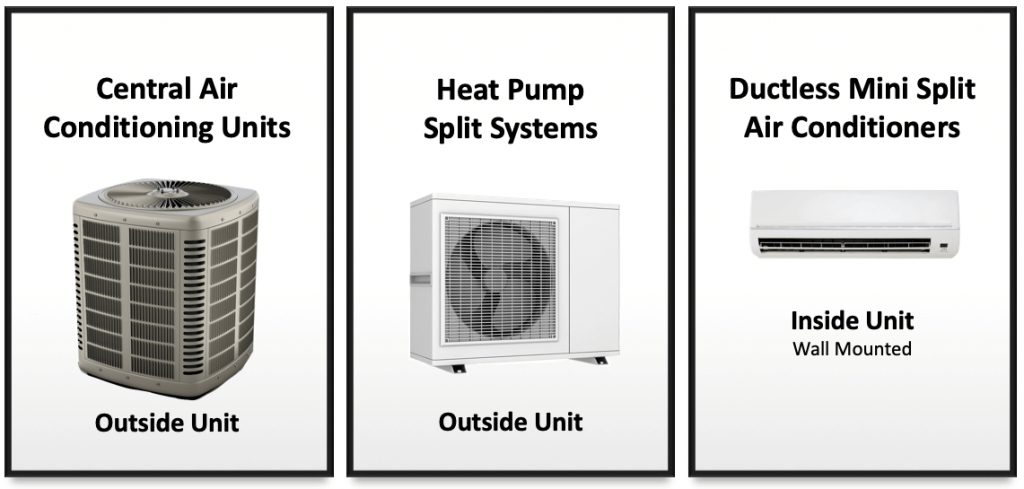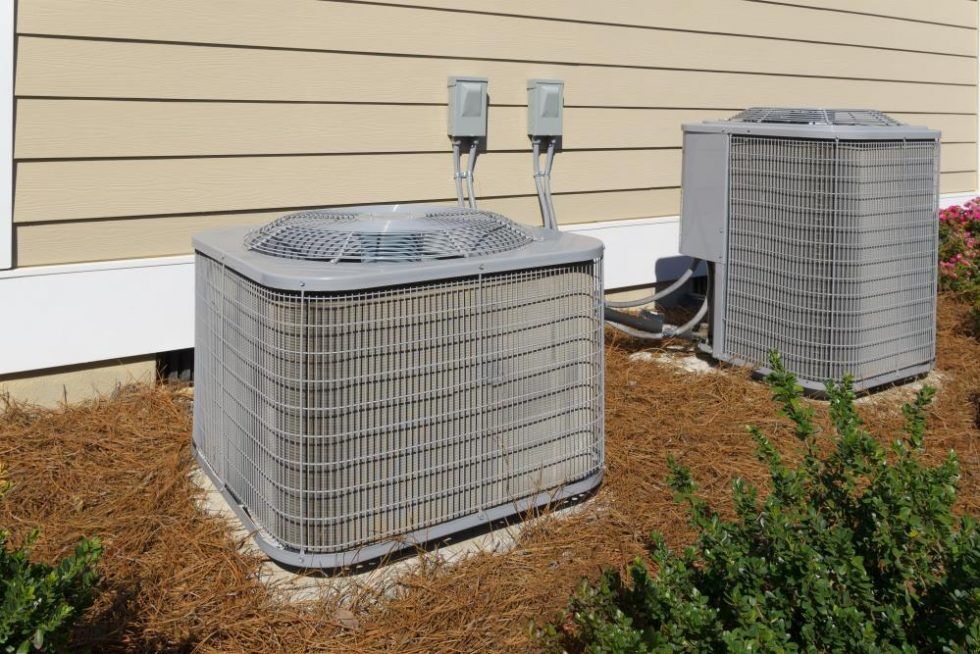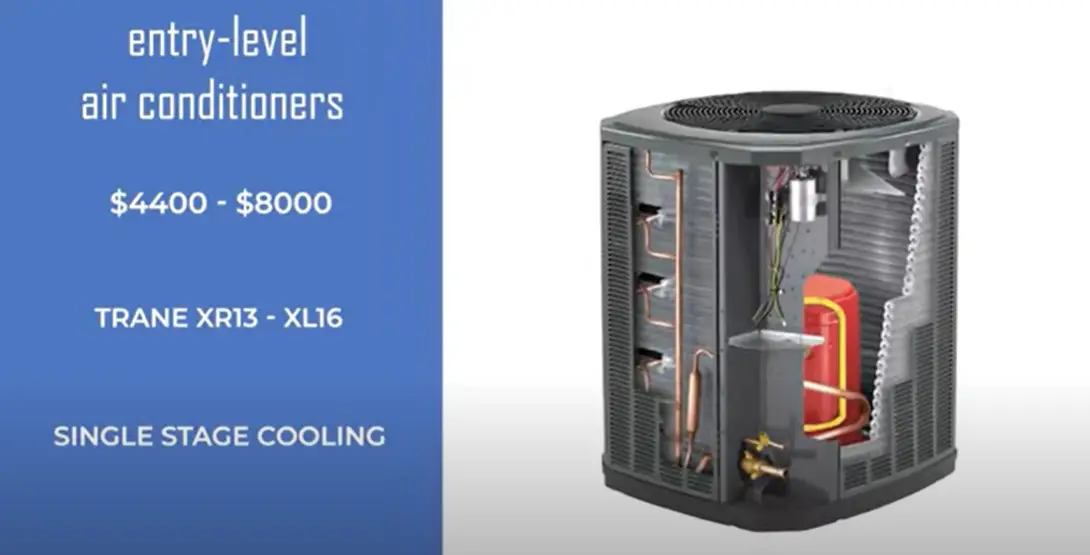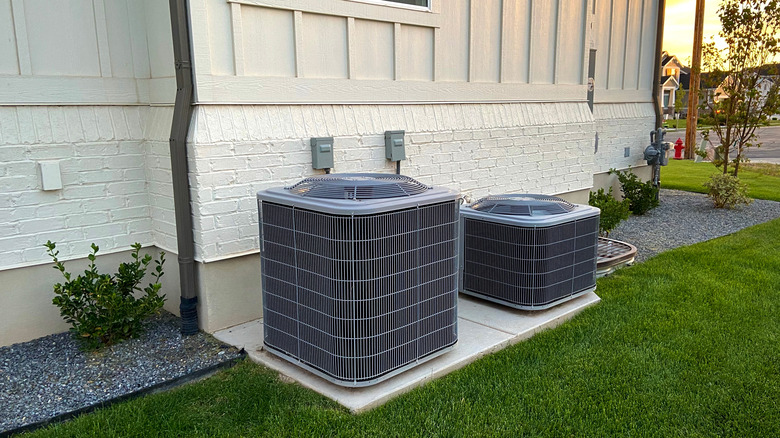Prices On Central Air Conditioning Units

Understanding the costs associated with central air conditioning units can feel overwhelming. It’s not as simple as picking the cheapest model; factors like efficiency, installation complexity, and your specific cooling needs all play a role. This article breaks down the pricing of central AC units, covering everything from initial purchase price to long-term operational expenses, providing valuable insights for homeowners, HVAC technicians, and facility managers alike.
Factors Influencing Central AC Unit Prices
Several key elements affect the price you'll pay for a central air conditioning system. Knowing these factors will empower you to make an informed decision.
System Size (BTU)
The cooling capacity of an AC unit is measured in British Thermal Units (BTU). A BTU represents the amount of heat needed to raise the temperature of one pound of water by one degree Fahrenheit. The higher the BTU rating, the larger the area the unit can effectively cool. Consequently, larger BTU units generally cost more. For example, a 2-ton (24,000 BTU) unit will be cheaper than a 5-ton (60,000 BTU) unit.
Sizing correctly is crucial. An undersized unit will struggle to cool your home, leading to higher energy bills and potential system burnout. An oversized unit, while capable of rapid cooling, will cycle on and off frequently, wasting energy and creating temperature inconsistencies. HVAC professionals use various methods to determine the appropriate size, including Manual J calculations, which consider factors like square footage, insulation levels, window efficiency, and climate.
SEER Rating
The Seasonal Energy Efficiency Ratio (SEER) measures the cooling efficiency of an air conditioner over a typical cooling season. It's calculated by dividing the total cooling output during the season by the total electrical energy input during the same period. Higher SEER ratings indicate greater energy efficiency, resulting in lower energy bills. As a general rule, units with higher SEER ratings have a higher upfront cost. The minimum SEER rating currently mandated by the U.S. Department of Energy is 14 in most regions.
Consider this: a 14 SEER unit might cost less upfront than a 18 SEER unit. However, over the unit's lifespan (typically 15-20 years), the higher SEER unit can save you a significant amount in energy costs. To decide whether the extra initial investment is worthwhile, calculate the payback period based on your local electricity rates and cooling needs.
Type of System
There are different types of central air conditioning systems, each with varying costs:
- Split Systems: The most common type, consisting of an outdoor unit (condenser) and an indoor unit (evaporator coil). These are generally more affordable than other options.
- Packaged Units: Contain all components (condenser, evaporator, compressor) in a single outdoor unit. Often used in homes without a separate furnace room or where space is limited. These can be slightly more expensive than split systems due to their self-contained design.
- Ductless Mini-Split Systems: Ideal for homes without existing ductwork. They consist of an outdoor unit connected to multiple indoor air handlers. While offering zone control and efficient cooling, they typically have a higher initial cost per cooling capacity than traditional ducted systems.
Brand Reputation and Features
Established brands with a reputation for reliability and performance often command higher prices. Features like multi-stage compressors (offering more precise temperature control and energy savings), smart thermostats, and advanced filtration systems also contribute to the overall cost.
Installation Costs
Installation is a significant portion of the total cost. Labor rates vary depending on location, the complexity of the installation (e.g., existing ductwork modifications), and the HVAC contractor's experience and overhead. Obtaining multiple quotes from licensed and insured contractors is crucial for securing a competitive price.
Price Ranges for Central AC Units (Installed)
Keep in mind that these are general price ranges and can vary significantly based on the factors discussed above. Prices include both the unit itself and standard installation costs.
- 2-Ton (24,000 BTU) Unit: $3,500 - $6,000
- 3-Ton (36,000 BTU) Unit: $4,000 - $7,500
- 4-Ton (48,000 BTU) Unit: $4,500 - $9,000
- 5-Ton (60,000 BTU) Unit: $5,000 - $11,000
These prices typically represent 14-16 SEER units. Upgrading to a higher SEER rating (e.g., 18-20 SEER) can add several hundred to several thousand dollars to the total cost.
Cost Breakdown Example
Let's consider a 3-ton, 16 SEER split system installation in a typical suburban home:
- Unit Cost: $2,500 - $3,500
- Installation Labor: $1,500 - $2,500 (including ductwork connections, electrical work, refrigerant lines)
- Permits and Inspections: $100 - $300
- Total Estimated Cost: $4,100 - $6,300
Long-Term Costs: Beyond the Purchase Price
The initial purchase price is just one part of the equation. Consider these ongoing costs:
Energy Bills
As mentioned earlier, the SEER rating directly impacts your energy consumption. A more efficient unit will translate to lower monthly bills. Use online energy calculators to estimate your potential savings with different SEER ratings.
Maintenance
Regular maintenance is crucial for ensuring the longevity and efficiency of your AC unit. This includes tasks like cleaning or replacing air filters, cleaning condenser coils, checking refrigerant levels, and inspecting electrical connections. A typical annual maintenance contract can cost between $100 and $300.
Repairs
Even with proper maintenance, AC units can experience breakdowns. Having a reliable HVAC technician is essential for timely repairs. Common repairs include compressor failures, refrigerant leaks, and fan motor issues. The cost of repairs can vary widely depending on the complexity of the problem.
Lifespan
The average lifespan of a central AC unit is 15-20 years. Replacing a unit before its end-of-life due to neglect or choosing an undersized system can negate any initial cost savings.
Tips for Saving Money on Central AC
Here are some practical tips to reduce your central air conditioning costs:
- Get Multiple Quotes: Compare prices and services from at least three different HVAC contractors.
- Consider Energy-Efficient Rebates: Many utility companies and government agencies offer rebates for installing high-efficiency AC units.
- Maintain Your System: Regular maintenance can prevent costly repairs and extend the lifespan of your unit.
- Use a Programmable Thermostat: Set your thermostat to automatically adjust the temperature when you're away or asleep.
- Improve Insulation: Proper insulation helps keep your home cooler in the summer, reducing the load on your AC system.
- Seal Air Leaks: Caulk and weatherstrip around windows and doors to prevent air leaks.
Considerations for HVAC Technicians and Facility Managers
For HVAC professionals and facility managers, understanding AC unit pricing goes beyond simple cost comparisons. It involves assessing the specific needs of the building, considering long-term operational costs, and selecting the most appropriate system for the application.
Life Cycle Cost Analysis
Instead of focusing solely on the initial purchase price, conduct a life cycle cost analysis (LCCA). This comprehensive approach considers all costs associated with the AC unit over its entire lifespan, including purchase price, installation, energy consumption, maintenance, repairs, and eventual replacement. LCCA helps you identify the system that offers the lowest total cost of ownership.
Building Automation Systems
Integrating your HVAC system with a building automation system (BAS) can optimize energy efficiency and reduce operational costs. BAS allows for centralized control and monitoring of HVAC equipment, enabling you to schedule temperature settings, detect malfunctions, and track energy consumption in real-time.
Refrigerant Regulations
Stay informed about evolving refrigerant regulations. Certain refrigerants, such as R-22, are being phased out due to their environmental impact. Replacing older systems with units that use more environmentally friendly refrigerants is often required. Factor in the cost of refrigerant changes and potential equipment upgrades when making purchasing decisions.
Preventative Maintenance Programs
Implement comprehensive preventative maintenance programs to minimize downtime and extend the lifespan of your HVAC systems. Regular inspections, cleaning, and component replacements can prevent major breakdowns and ensure optimal performance.
Conclusion
The price of a central air conditioning unit is influenced by numerous factors. By understanding these factors and considering both upfront costs and long-term operational expenses, homeowners, HVAC technicians, and facility managers can make informed decisions that balance performance, efficiency, and affordability. Remember to prioritize proper sizing, choose a reputable brand, and invest in regular maintenance to maximize the value of your investment.










